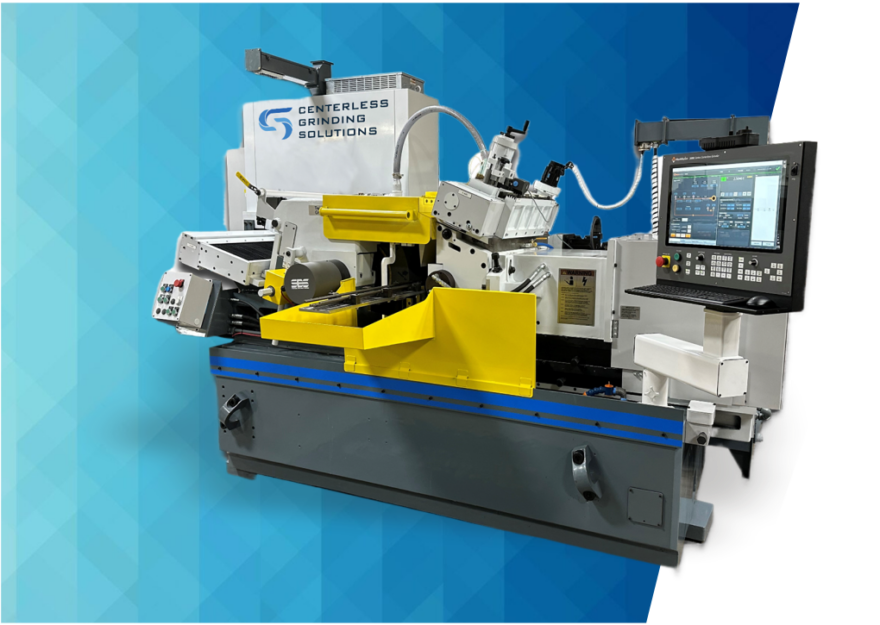
The difference between profitable and struggling manufacturing operations often comes down to equipment maintenance. This holds especially true for centerless grinding operations, where precision and reliability directly impact product quality and operational efficiency.
Modern manufacturing facilities face increasing pressure to maximize uptime while maintaining exceptional part quality. Production schedules grow tighter, tolerance requirements become stricter, and customer expectations rise. In this demanding environment, equipment reliability isn’t just beneficial—it’s essential for survival.
The good news? Most costly breakdowns are preventable. Whether operating a Cincinnati Milacron or another leading brand, implementing a robust preventative maintenance program can dramatically extend a grinder’s lifespan and ensure consistent part quality. Studies show that organizations that implement structured maintenance programs typically achieve significantly higher equipment reliability rates than those that practice reactive maintenance.
This comprehensive guide walks through essential maintenance practices that keep centerless grinders running at peak performance, helping manufacturers avoid unexpected downtime and maintain the precision their customers demand. From daily inspections to annual overhauls, you’ll discover proven strategies for protecting your grinding investment.
Centerless grinders represent a significant investment in manufacturing capabilities. These sophisticated machines remove material from cylindrical workpieces without needing center holes or end support. Their unique design allows for continuous throughput, making them essential for high-volume production of precision parts.
Key components of a centerless grinding system include:
Each component plays a vital role in achieving precise tolerances and surface finishes. When properly maintained, centerless grinders can consistently produce parts with tolerances as tight as 0.0001 inches. However, this precision depends entirely on proper maintenance and regular calibration of these interdependent systems.
Regular preventative maintenance delivers measurable improvements across multiple aspects of centerless grinding operations. Manufacturing facilities that implement structured maintenance programs consistently report enhanced operational efficiency and reduced long-term costs.
Consider surface finish quality. Even minor misalignments or wear patterns can create subtle imperfections that compound over time. Regular maintenance catches these issues before they affect product quality, maintaining consistent output and reducing scrap rates.
The financial impact extends far beyond immediate repair costs. Scheduled maintenance typically requires only a fraction of the time needed for emergency repairs. This planned downtime can be coordinated with production schedules, minimizing disruption to workflow and delivery commitments.
Proper maintenance also extends beyond the immediate grinding operation. Well-maintained machines:
Take coolant system maintenance as an example. Monitoring and maintaining coolant concentration, pH levels, and filtration systems prevents multiple issues simultaneously. Clean, properly maintained coolant systems reduce thermal distortion, improve surface finish, extend wheel life, and protect expensive machine components from corrosion.
Modern grinding operations also benefit from improved quality control. Well-maintained machines produce more consistent results, leading to:
Daily inspections establish the foundation for reliable grinding operations. Every shift should begin with a systematic check of critical components:
Weekly maintenance focuses on deeper system checks and preventative measures:
Monthly maintenance encompasses comprehensive system evaluation and adjustment:
Annual maintenance requires a thorough evaluation of all systems:
Understanding common centerless grinding issues helps maintenance teams spot potential problems before they impact production quality. Several key indicators often signal developing maintenance needs.
Inconsistent surface finishes typically indicate wheel dressing requirements or coolant system issues. When parts show dimensional variations, first check work rest blade wear and regulating wheel condition. Unusual vibrations may signal bearing wear or misalignment of key components.
Chatter marks on finished parts deserve immediate attention. These surface imperfections often stem from multiple potential causes:
Regular preventative maintenance addresses these issues systematically. For example, weekly work rest blade inspections catch wear before it affects part quality. Similarly, scheduled coolant system maintenance prevents many surface finish problems.
Effective preventative maintenance forms the cornerstone of successful centerless grinding operations. By implementing systematic inspection and maintenance protocols, manufacturing facilities protect their investment while ensuring consistent, high-quality output.
Success in modern manufacturing demands both precision and reliability. Facilities can achieve both goals through proper maintenance while optimizing operational costs. Investing in preventative maintenance pays dividends through reduced downtime, improved part quality, and extended equipment life.
Contact Centerless Grinding Solutions today for a free consultation on preventative maintenance for your centerless grinders. Keep your machines running smoothly and avoid costly downtime.
We are dedicated to delivering cost-effective centerless grinding solutions that reduce downtime, boost efficiency, and achieve the finest quality in precision grinding. Ready to discuss your specific requirements or need more details? Contact us today. Our experts are always ready to assist you.